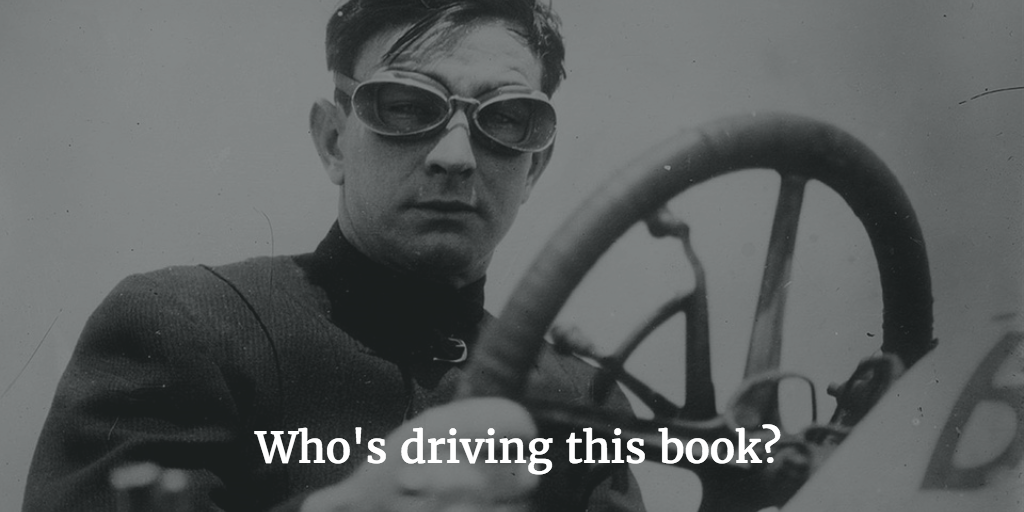During the course of writing a book, you learn a great deal about yourself as well as your topic. You confront demons of doubt. You learn how to power through distractions and procrastination. You dig deep and discover insights you didn’t even realize you had.
As the book makes its way through publication and launch, the lessons keep on coming. You might find that you suffer from the imposter syndrome, or that you love writing but dread marketing. Many people discover that the childhood dreams of being a published author are products of a bygone era.
In doing an interview with Roger C. Parker about the process of writing and publishing two books, I had a startling realization:
I’m an impatient control freak.
No one who knows me well would describe me that way – at least, I think they wouldn’t. I tend to be easy going. My kids might even say, out of my earshot, that I’m a pushover.
But when examining my reasons for publishing books independently, impatience and control were my main motivators.
Who knew?
In my own defense, I’ll lay out the reasons for these personality traits, at least when it comes to publishing.
Publishing and Impatience
My first book, Subscription Marketing, was written expressly for marketing professionals. The book’s premise is that business model changes – namely the growth of subscriptions – hold implications for how marketing engages with customers.
I set out to write the book because I didn’t find anyone talking about that topic in a dedicated way. I felt I had the opportunity to fill the gap and wanted get the book out quickly. (Also, I wanted the research and examples to be relevant when the book first came out.) Sending proposals and working with a publishing house would take months, and the opportunity would be lost.
The fastest path to publication was to publish the book myself. From finished, proofread draft to getting the book out in the world, both in printed form and ebook, took only about a month.
Kabam – instant gratification, relative to the world of book publishing.
As any psychologist will tell you, instant gratification can be addicting. This first experience set my expectations for how long it should take to go from final proofing to production.
I got hooked on the speed of publishing independently.
The Need for Control
By publishing that book independently, I retained control over many important elements of the process, including:
- The editor and proofreader who worked on the book
- The cover design
- Which style guide the copyeditor and proofreader should use
- The interior design and layout
- The price of both print and digital editions
- What content I could give away as free chapters for promotion
- When the book would be published
Authors working with traditional publishers do not always have this level of control. They may not agree with the cover design options presented to them or the editor assigned to them. Some authors I’ve spoken with had extremely tight timeframes for drafting the book. Others were restricted in how much content they could give away as book marketing. Few had any input into the price charged for the finished product.
This kind of control is also addictive. So when I set out to write The Writer’s Process: Getting Your Brain in Gear, I again chose to publish it myself. The trend has continued for subsequent books, The Workplace Writer’s Process and Writing to Be Understood.
From Author to Publisher
One book consultant has suggested that that authors should use the term independently published rather than self published. At first, this sounded like marketing spin. On further reflection, though, there’s logic to the designation.
In the course of publishing these books, I have taken on many of the activities of a publisher:
- Purchasing and assigning ISBNs
- Hiring editors and proofreaders
- Hiring cover designers
- Creating a marketing and publicity plan
- Making distribution, pricing, and format decisions
- Recording audiobooks
My consulting business has become, in part, a publishing house with one author.
Update to the original article: I now have a publishing “imprint” and logo:

I share these thoughts for those of you who are struggling with the decision about how to publish your books, or what course is the best. My choice represents only one path of many. Your decision should depend on many factors, including your skill set, your willingness to take the reins and make tough decisions, the type of book you’re publishing, and the market you hope to reach.
If you do choose the self-publishing route, beware: you may discover that somewhere, deep inside, you’ve got an inner control freak.
If you’re considering being an indie author, check out my Resources for Indie Authors.
For more about the journey of writing a book, read The Writer’s Process.
Find a transcript of the interview with Roger on his blog post.
